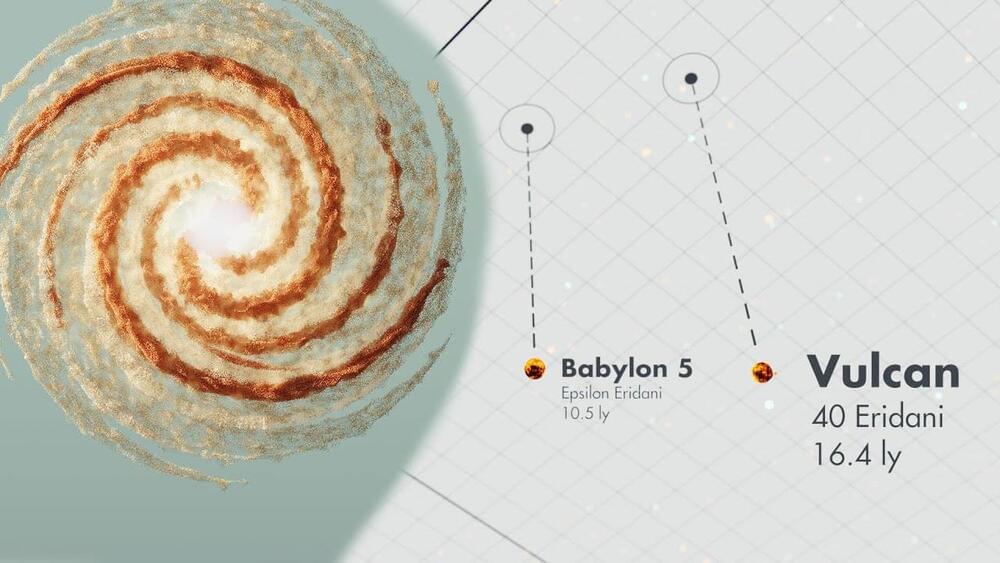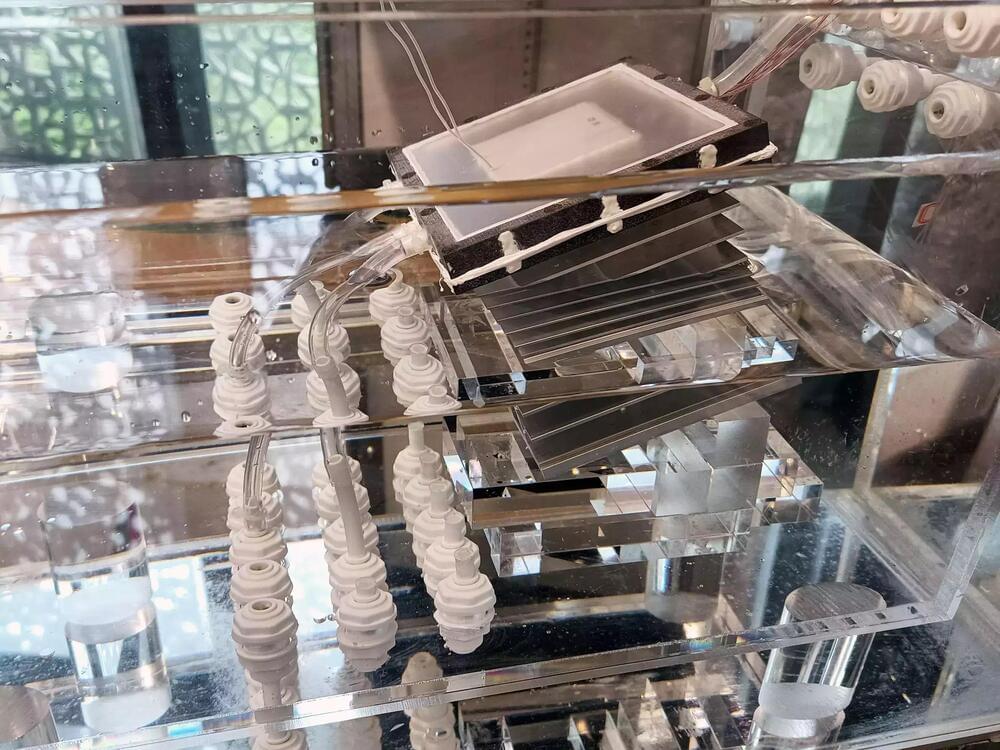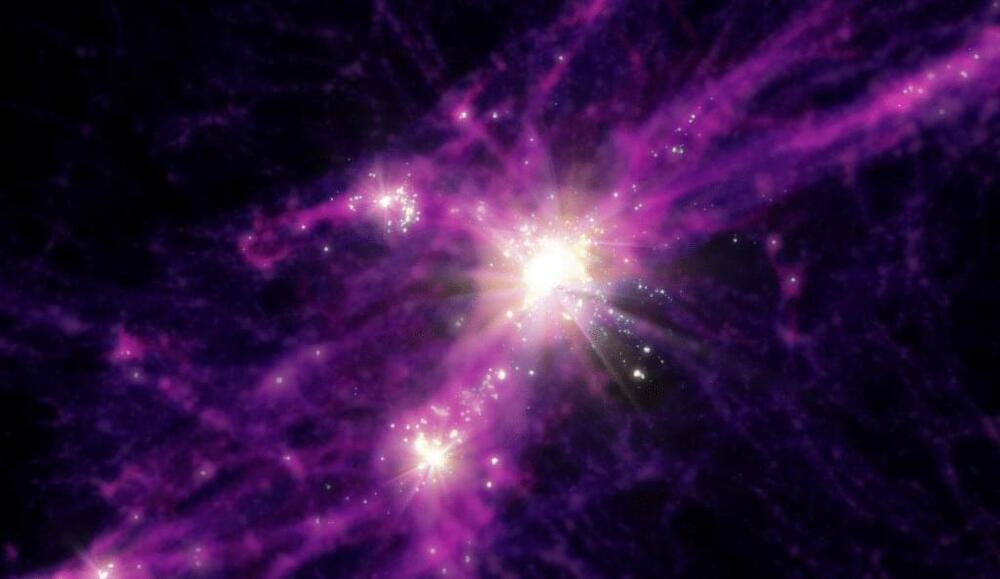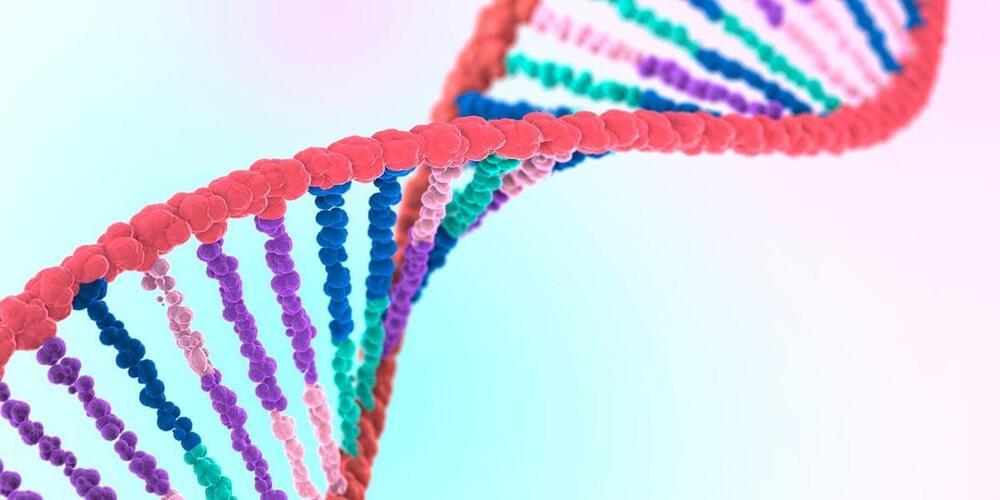Physicists have long suspected that hunks of metal could vibrate in a peculiar way that would be all but invisible. Now physicists have spotted these “demon modes.”
I really am going to watch this. I love Sci-Fi and AI.
Prepare to meet… The Creator.
Watch the brand-new trailer for #TheCreator and experience the motion picture event only in theaters September 29.
TS Digest Issue
Posted in futurism
Inspired by the annual growth of tree rings, researchers at Harvard University developed protein fibers that record the history of a cell as fluorescent bands carrying information about time and gene regulation.
Check out the infographic here:
Meenakshi is the Editor-in-Chief at The Scientist. Her diverse science communication experience includes journalism, podcasting, and corporate content strategy. Meenakshi earned her PhD in biophysics from the University of Goettingen, Germany.
This is a scientifically accurate depiction of where a select few sci-fi star systems are in our galaxy. This has been an obsession of mine for the past few months to show this visually and get a feel for where these systems are around the solar system. Also, it should be noted, that the relative positions of the stars are accurate, but their size is not.
Link to the stories I mentioned:
Star Trek: Stellar Cartography — https://amzn.to/3RN4SKz.
Project Hail Mary-https://amzn.to/3RJTzm7
Contact Carl Sagan — https://amzn.to/46oV79W
Flight of the Dragonfly (Rocheworld) Robert L Forward — https://amzn.to/3S541oL
Movies and TV: avatar, deep space 9, TNG, voyager, event horizon, lost in space, babylon 5, dune, and alien.
The data used for the star positions is the HYG database, specifically the HYG 3.5. https://github.com/astronexus/HYG-Database.
A trio of scientists spent weeks on the Yukon River to learn more about the habitat and landscape where ancient dinosaurs once roamed.
Wind turbines are a feat of engineering. The massive structures are visually impressive and generate vast amounts of clean energy via a natural and pollution-free source.
Because of that, you’d think they take a long time to install — especially when placed far out at sea.
However, at an offshore wind farm in Zhangpu, China, the state-owned China Three Gorges power company managed to get one up and running in just over a day, Electrek reports.
Researchers at MIT have created a device that may soon be able to turn seawater into drinking water for entire households using nothing but solar energy.
And, to top it off, the water produced by this device could eventually cost less than US tap water, according to a paper published last week in the peer-reviewed journal Joule.
Yang Zhong, a graduate student at MIT and an author of the September 27 paper, said this desalination device is more efficient, longer-lasting, and cheaper than previous desalination devices.
At the edge of the universe, billions of light years away, there’s a time when the first galaxies were just beginning to light up. Think of it as the universe’s childhood. Scientists have always been keen to study this era because it helps us understand how galaxies, like our own Milky Way, came into existence. Recently, the James Webb Space Telescope (JWST), gave us an unprecedented peek into this ancient time, revealing some exciting and unexpected finds.
The JWST found a lot of really bright, big galaxies from that early era. This was surprising because we didn’t expect such large galaxies to exist so early in the universe’s history. These discoveries left astronomers with many questions. Were these bright galaxies truly from that ancient era? If they were, how did they form so quickly? And do these new findings fit with our current understanding of the universe’s history and growth?
Northwestern University researchers may have cracked the mystery. Contrary to initial beliefs, these galaxies might not be as massive as they appear. Instead, scientists say their eye-catching brightness could result from sudden, dazzling bursts of star creation.
“This isn’t a conspiracy theory. Listen to former Israeli officials such as Brig. Gen. Yitzhak Segev, who was the Israeli military governor in Gaza in the early 1980s. Segev later told a New York Times reporter that he had helped finance the Palestinian Islamist movement as a ” counterweight” to the secularists and leftists of the Palestine Liberation Organization and the Fatah party, led by Yasser Arafat (who himself referred to Hamas as ” a creature of Israel.”)
The Israeli government gave me a budget, the retired brigadier general confessed, and the military government gives to the mosques.
Hamas, to my great regret, is Israel’s creation, Avner Cohen, a former Israeli religious… More.
What do you know about Hamas?
“We use these probes to fish out molecules of interest in the sample,” says Ivanov. “We know which barcode corresponds to which probe. This allows us to detect whether a molecule is present in solution or not. In a way we are fingerprinting what’s inside the solution.”
“It was the synergy of bringing it all together that makes this work important. This includes the precision with which you sequence, the ability to control the transport of the analyte, and also elements of machine learning to be able to reconstruct the signal.” —Aleksandar Ivanov, professor of chemistry, Imperial College London
Combining DNA bar coding and nanopore sequencing makes for a powerful technique by pairing both selectivity and sensitivity to more effectively screen for diseases, says Edel. “In the context of personalized [medicine] and being able to perform more effective diagnostics and screening, there are two aspects at play. One is getting a better snapshot of a patient by detecting an array of biomarkers. And for some diseases, biomarkers—especially in the early stages—are found at very low concentration. So being able to detect on an individual basis at low concentrations is absolutely critical.”









